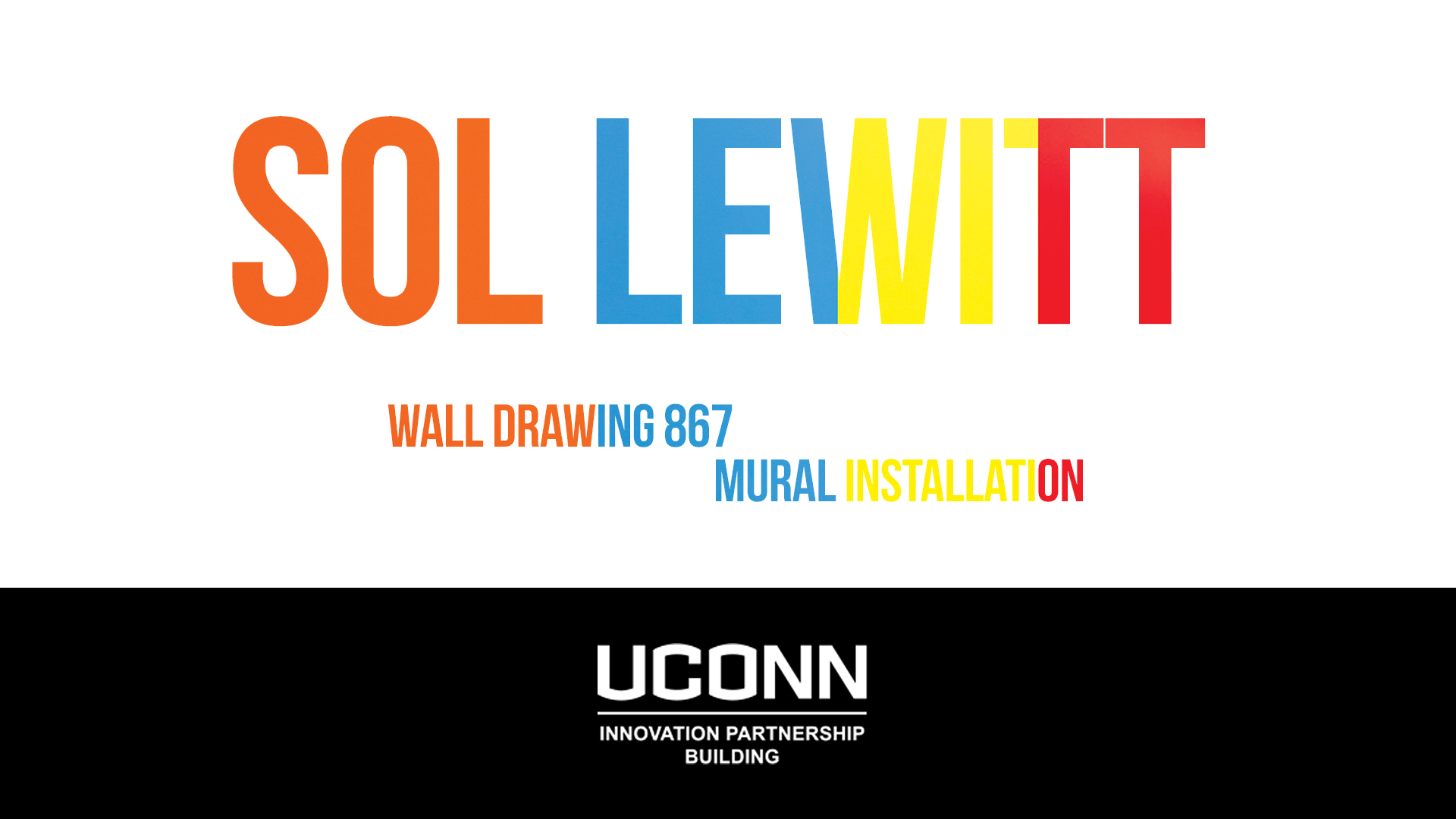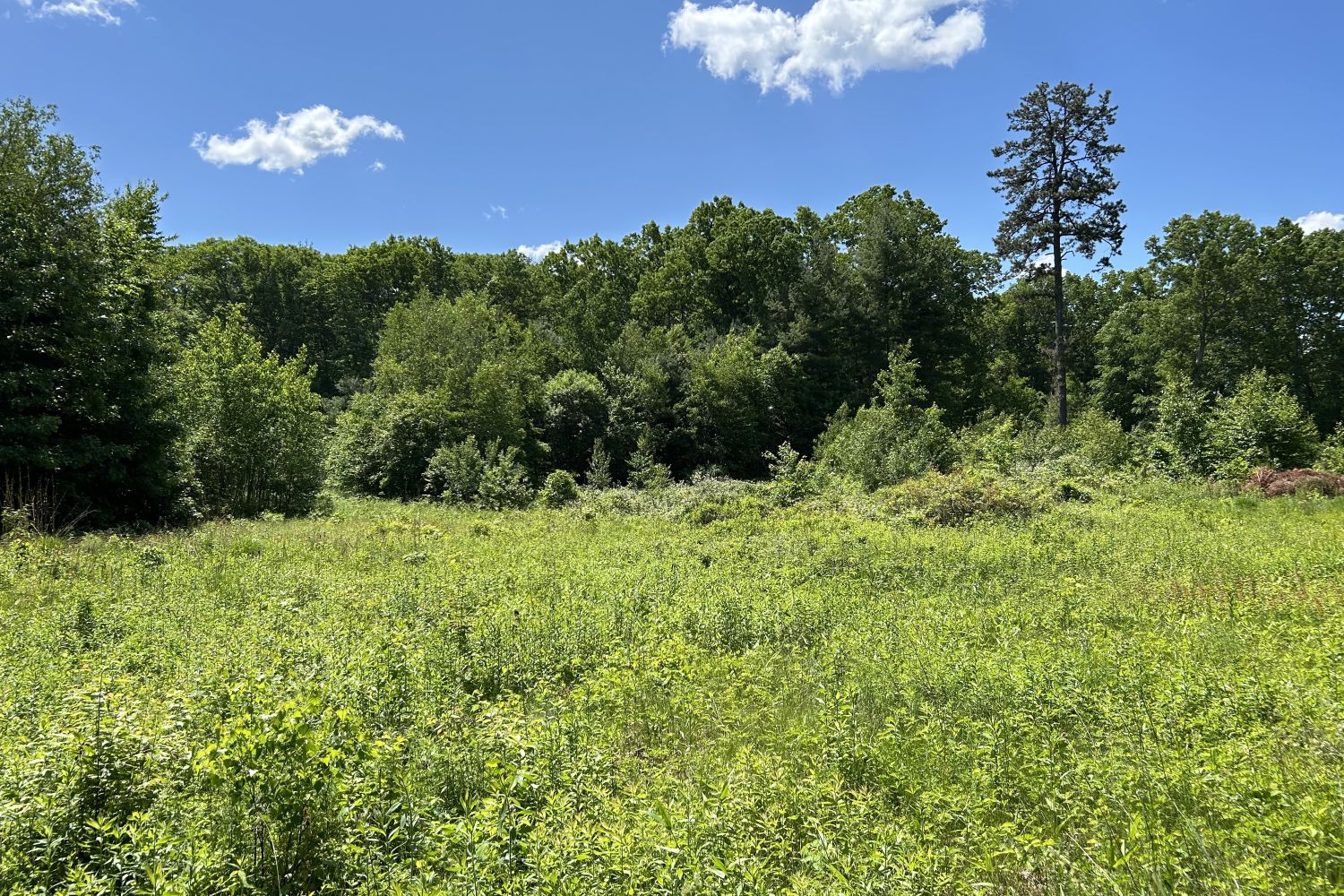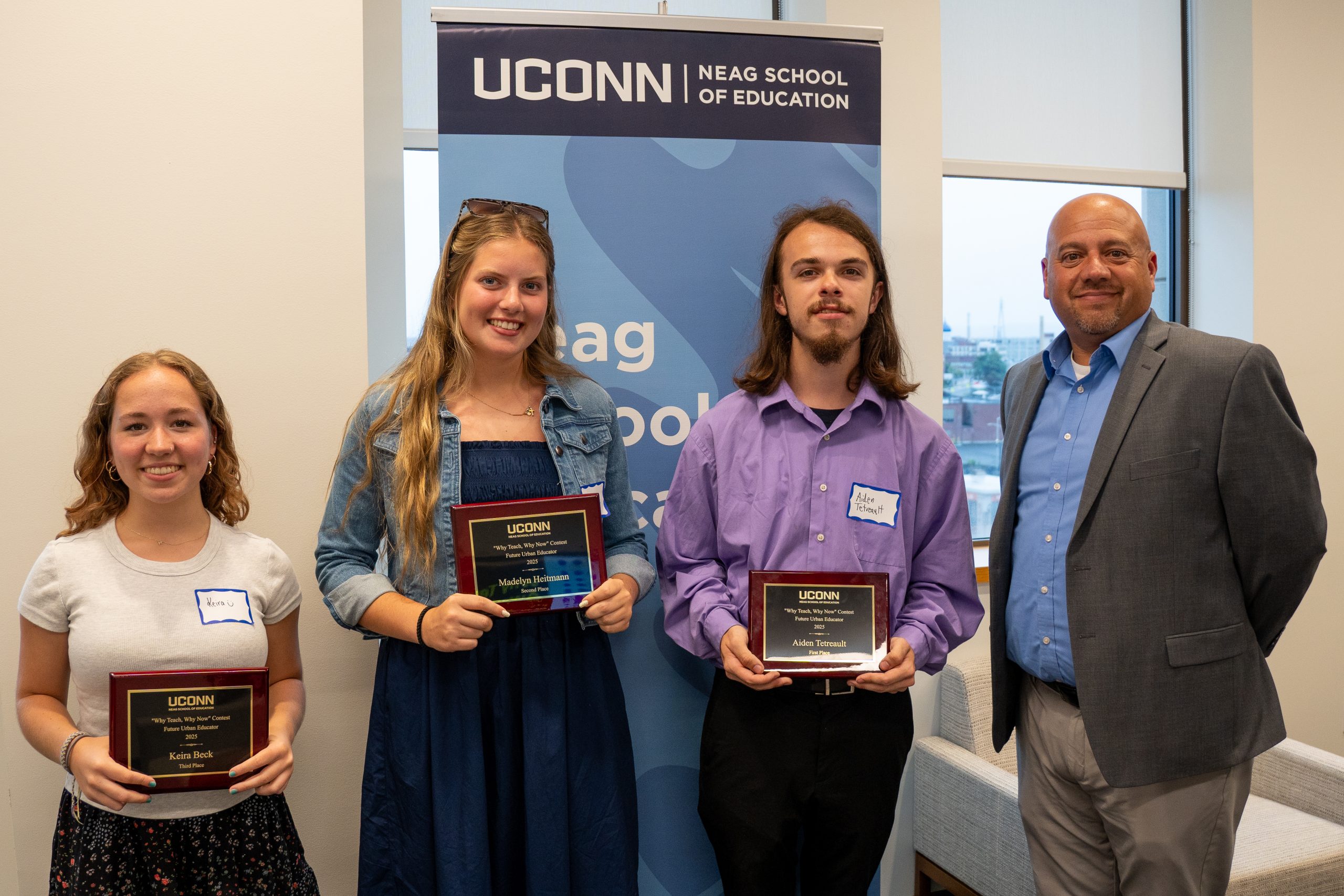This past Fall semester, UConn School of Fine Arts students worked together with UConn Engineering students to install ‘Wall Drawing 867’ a mural conceptualized by Sol LeWitt, onto the walls within the glass lobby of the new UConn Innovation Partnership Building. This collaborative project is one part of an overall plan for multiple STEAM (Science, Technology, Engineering, Arts, Mathematics) initiatives between the arts and sciences at UConn.
The mural is an eye catching piece and is viewable from the road as one travels on Discovery Drive along the new northend entrance to the main Storrs campus. It consists of multiple blocks of color with a wavy line horizontally through the middle which can be discerned by the differences in gloss and matte clear coats along the color blocks.
LeWitt was an American artist linked to various movements, including Conceptual art and Minimalism. A Hartford, Connecticut native, he came to fame in the late 1960s with his wall drawings (over 1,200 of which have been executed), but was prolific in a wide range of media including drawing, printmaking, photography, painting, installation and artist’s books.
According to the principle of his work, LeWitt’s wall drawings are usually executed by people other than the artist himself. Even after his death in 2007, people are still making these drawings. Writing about making wall drawings, LeWitt himself observed in 1971 that “each person draws a line differently and each person understands words differently”. Between 1968 and his death in 2007, LeWitt created more than 1,270 wall drawings. The wall drawings, executed on-site, generally exist for the duration of an exhibition; they are then destroyed, giving the work in its physical form an ephemeral quality. They can be installed, removed, and then reinstalled in another location, as many times as required for exhibition purposes. When transferred to another location, the number of walls can change only by ensuring that the proportions of the original diagram are retained.*
The new mural at UConn’s Innovation Partnership Building is a permanent mural installation for the foreseeable future. Stop or drive by anytime to see this wonderful work of art!
*Source: Wikipedia



